
Suda Goichi made a bonafide Wii classic with No More Heroes. While he was not director for the lesser sequel, Goichi took on a producer role at Grasshopper Manufacturer. Between 2007 and 2019, Goichi and his boys would develop several experimental cult action games across many platforms.
After a long hiatus, he returned with Travis Strikes Again: No More Heroes; a spin-off that functioned as a connection to the “Kill the past” games, and was a “coming attractions” to the real sequel. A confounding game to some, a surprise masterpiece to others; Travis Strikes Again defied convention and served as a proving ground for Grasshopper Manufacturer to better understand Unreal Engine 4.
After the eclectic Travis Strikes Again, Grasshopper Manufacturer is finally delivering No More Heroes III. This is a game that promises to be what fans have been asking for. Or is it something far greater than anything fans bargained for?
This is a review coupled with a supplemental video review. You can watch the video review or read the full review of the game below.
No More Heroes III
Developer: Grasshopper Manufacturer
Publisher: Grasshopper Manufacturer
Platforms: Nintendo Switch
Release Date: August 27th, 2021
Players: 1
Price: $59.99 USD

Anyone who hasn’t played Travis Strikes Again will come into No More Heroes III very confused. Despite how Travis Strikes Again was marketed as a spin-off, it may as well be the actual No More Heroes II. Lots of characters return, and even some story elements like the Deathdrive game console and some themes that got introduced gets paid off in No More Heroes III.
The story begins long before the events of the first No More Heroes, as a youth named Damon Riccitiello befriends a Spielbergian extra terrestrial called FU. Like the classic 1982 film, FU and Damon form a psychic bond, and they have a heartfelt goodbye.
Decades later, after the events of Travis Strikes Again, FU returns to Earth and Damon has become a powerful CEO. While he was away, FU was ruthlessly conquering planets and turned out to be heinously evil- yet he still values his friendship with Damon.
Together, they seek to dominate Earth with the help of FU’s former prison inmates. The only one who can thwart FU and his psycho alien entourage is the infamous weeb assassin: Travis Touchdown.
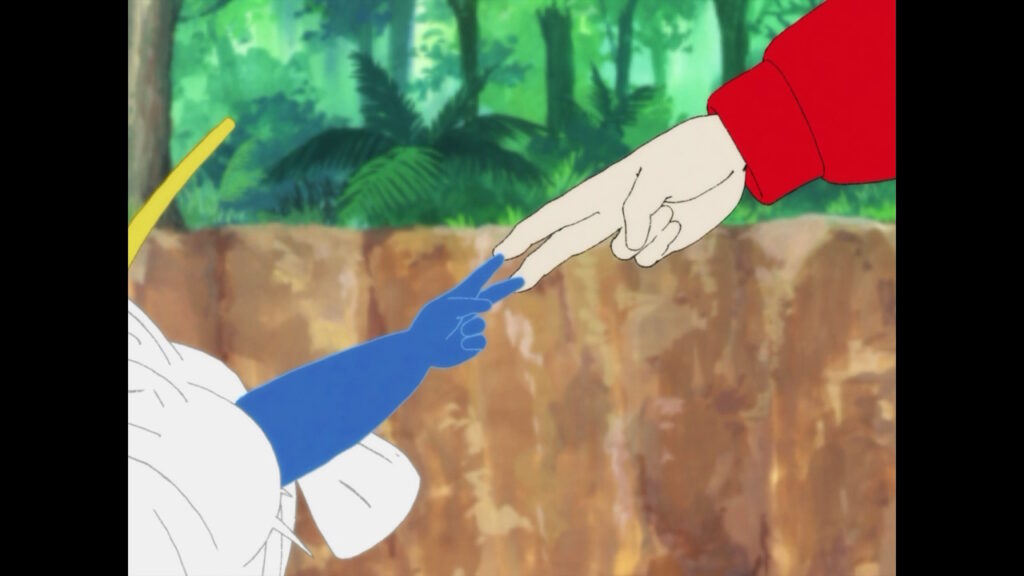
What follows is an utterly psychedelic bloodbath with mini games and games within games. The events will leave jaws hitting the floor and a lot of discussion of the filmography of Takashi Miike.
Like always; Travis will have to earn cash to pay his fees to engage in mortal combat with FU’s alien buddies. What No More Heroes III does differently is that it forgoes traditional level structure, and puts a greater emphasis on the hub environments than any prior entry.
This is a double edged sword; the hub of Santa Destroy in the first game proved to add a lot of flavor and personality to Travis’ day to day activities. When not dumpster diving for shirts or grabbing Lovikov’s balls, Travis would do mini games to earn money for his entrance fees, and would run through themed levels with thugs and a stage gimmick.
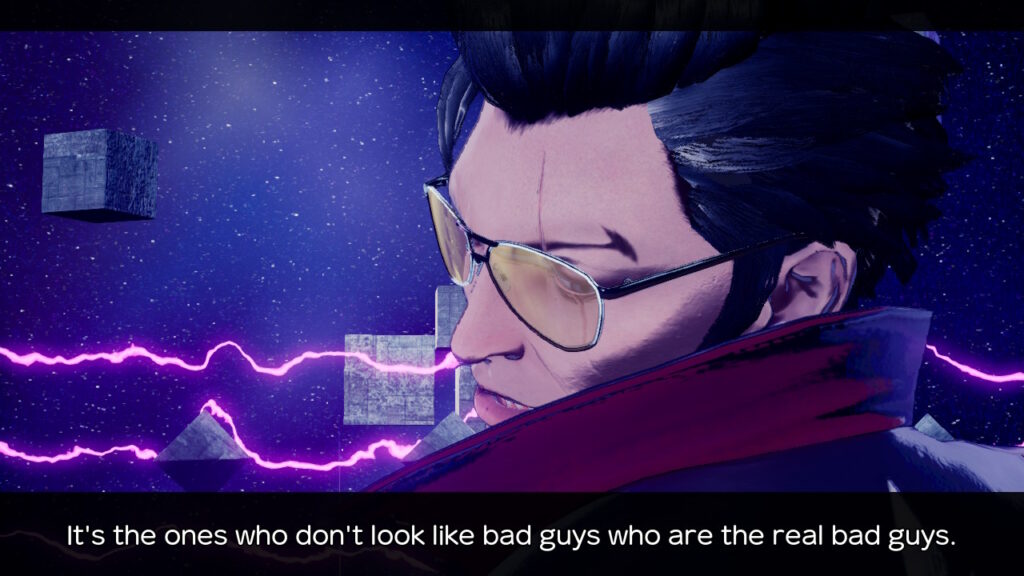
No More Heroes III still has Travis running around an awkward hub map mowing lawns and finding collectibles; in fact the game triples down on this. Santa Destroy is only one of six maps that gradually open up as the story unfolds, and more mini games become available the deeper Travis goes down the rabbit hole.
The drawback is No More Heroes III has no actual stages. In the first No More Heroes, when going up against Shinobu, Travis fought his way through a high school themed level and had to cut the sprinklers to prevent his beam katana from shorting. Another example is Dr. Peace’s stage being in a baseball stadium, and having to bat a few balls at certain intervals.
In No More Heroes III, the hub worlds have various markers where Travis gets beamed up into a completely disconnected arena in a UFO or some other enclosed location. The only objective is to fight and win, get a ranking, and then get sent back to the hub world.
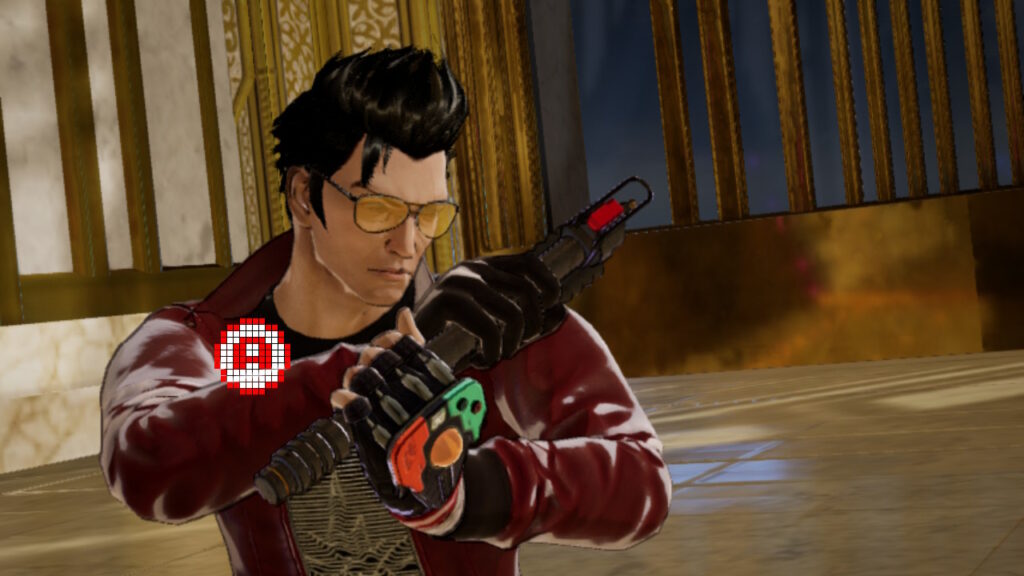
Why No More Heroes III was designed in this manner becomes apparent very early, and it’s seemingly a technical reason. Travis Strikes Again was one of the few Unreal Engine 4 games that runs 60 frames per second.
Suda Goichi is adamant to maintain this level of fluidity in his games moving forward. The only way No More Heroes III can sustain a frame rate that high on Nintendo Switch specs is to have all the action take place in very simple arena. This compromise does pay off, since the combat is very fluid and Travis has more options than he’s ever had.
The battles, mech sequences, and boss fights do manage a surprisingly stable 60 frames per second. However, it’s the hub worlds where the game runs at 30 fps, and the whiplash of jumping back and forth can be a bit jarring. The incongruence between the refresh rates is not even the worst part; it’s the absurd cut backs Grasshopper Manufacturer had to make to keep 30 fps stable.
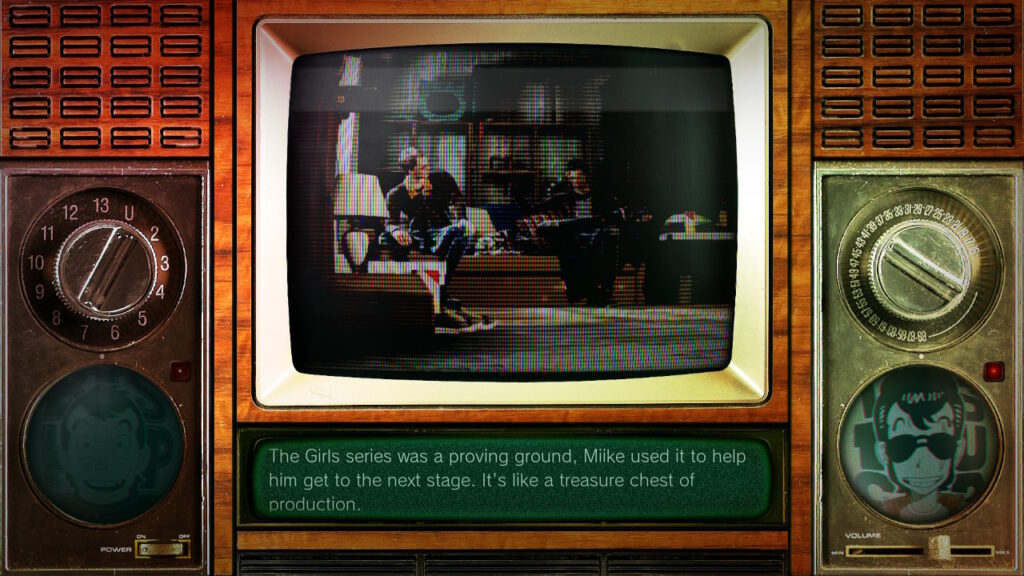
Anyone who thought the Santa Destroy looked boring in the first game will think it was vibrant after seeing the desolate wastelands of Call of Battle and Thunderdome. There are fewer original decorations and signage to make the worlds feel lived in, and the level of detail is in a constant state of shift as Travis explores.
Geometry is rarely complex; often the environments resemble a PlayStation 2 game or the first No More Heroes. Most embarrassingly is the same two male and female NPCs that are recycled everywhere. These two poor devils don’t even resemble townspeople, and look more like bathroom attendants from The Jetsons.
Prior entries in the series had so many cool incidental NPCs. The guy that ran the job center, Thunder Ryu, the receptionist at the assassin building, and even the t-shirt vendor man were all memorable and had dialogue to match their character. No More Heroes III does not have this attention to detail, and everyone in all six areas are the same spandex-wearing generic model.
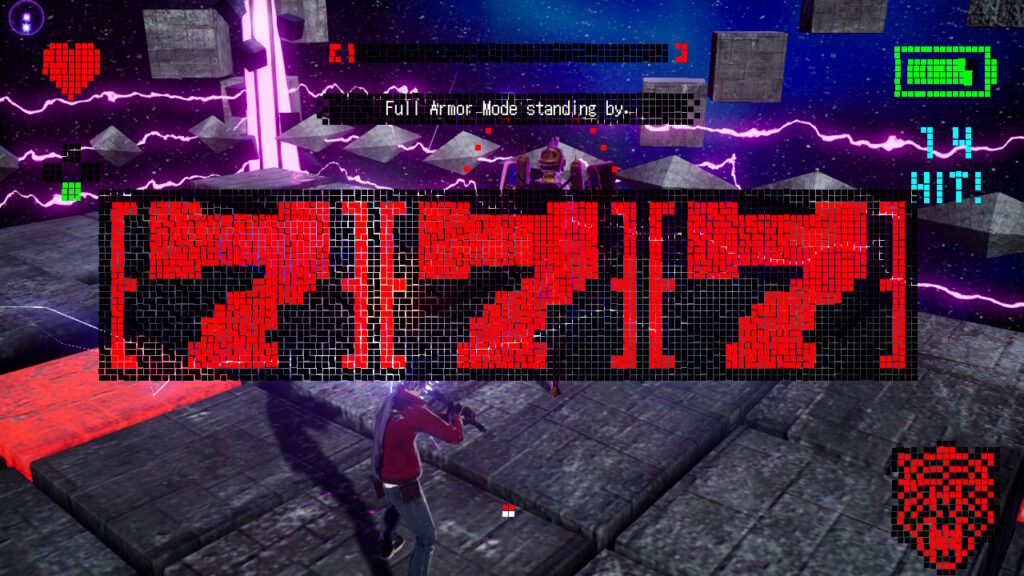
The hub areas may be disappointing, and not having real stages is downright depressing; but at least it’s better than what Deadly Premonition 2 offered. What No More Heroes III does get absolutely right is its vicious combat and stylish presentation.
Travis controls better than ever, and he’s brought some of his special deathglove attacks from Travis Strikes Again. He can use the force, slow down time, or do a full-body two-footed kick. Wrestling moves are still present, and pulling them off requires more finesse than in prior games.
Either stunning enemies or grabbing them from behind will trigger a brutal wrestling move, which does hefty damage and substantially adds to Travis’ style rating. No More Heroes III is not a wrestling game, and a majority of the violence is done with swordplay.

Travis’ combat style is akin to a samurai. Sometimes encounters demand as much defensive play as offensive, and being able to stay calm and keep your wits about you is key to overcoming unbelievable odds. Rushing is a great way to see the game over screen because enemies can hit hard and require a bit of finesse.
No More Heroes III has a variety of enemy types that demand different strategies. Some robot boys like to play keep-away and are very defensive; while a biker helmeted guy from Hotline Miami is very aggressive but vulnerable to Travis’ slow-mo side step.
There are many scenarios where different enemy combinations are working together to brutalize Travis, and having to manage all the strategies while keeping the beam katana charged is where a lot of the tense joy comes from. Dodge rolling and kiting threats while avoiding mines and bullets is the kind of climactic action fans will be excited to experience in a No More Heroes sequel.
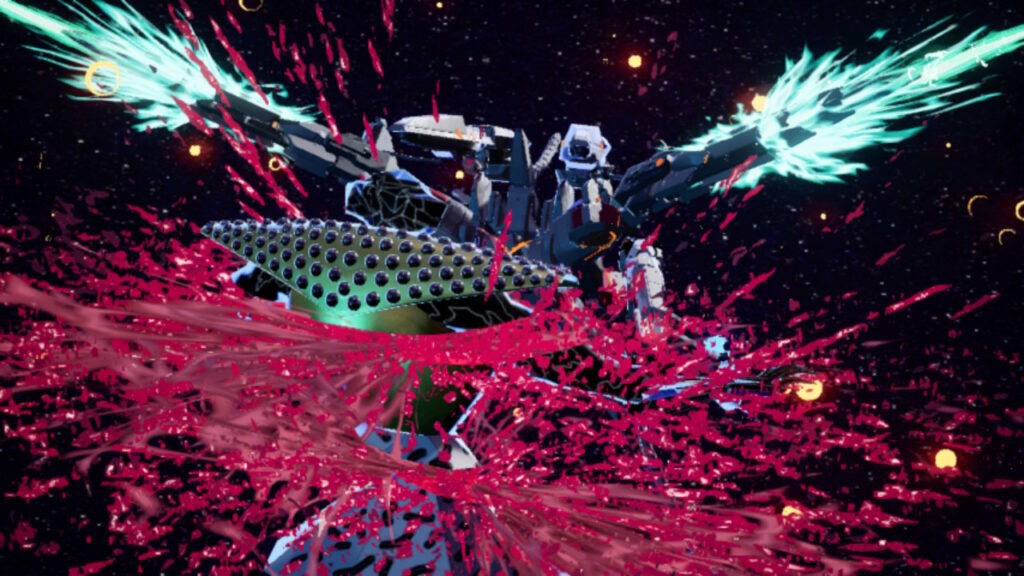
Travis’ signature finishers are back, and so is his slot reel. These can turn the battle further in his favor, ranging from super charging all of the basic swing attacks, unblockable wrestling moves, or even powering up the mech armor to launch a flurry of homing missiles.
The visuals during these sequences are lurid and surreal. Thick, gelatinous blood, bizarre alien physiology, and the perfect slices of the beam katana make No More Heroes III have incredible visuals when fighting. It’s too bad the hubs fail to match the polish of the combat.
The cutscenes are a wild and untamed visual tours de force, sometimes mixing media and defying explanation. Soda Goichi is unlike any storyteller in the world, and No More Heroes III dares to take huge risks with its narrative.
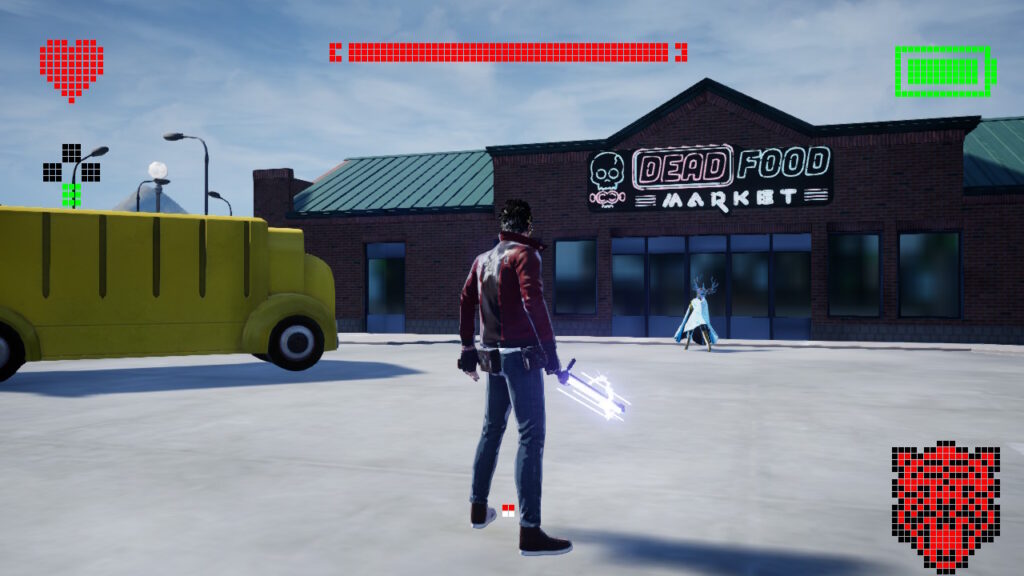
Beyond the gutsy narrative that is seething with hate and contempt towards the establishment; some of the boss fights also live by this same creed. Just when you think you’ve seen it all, No More Heroes III will kick you in the back of the head and will surprise you with something totally different.
The bewildering shock and awe from the boss fights make the lame overworld worth suffering through. The display of creativity and confidence in unusual mechanics keep the action fresh and engrossing through out. The experience is punctuated with many stylish flourishes that elevate the presentation.
Between the various anime style intros and ending credits that play between ranked battles, the Miike film discussions with Travis and Bishop, and sheer disdain of Disney’s MCU and Electronic Arts in the subtext; No More Heroes III stands tall as Grasshopper Manufacturer’s most punk game yet. The flippant attitude is bolstered by an incredible soundtrack.
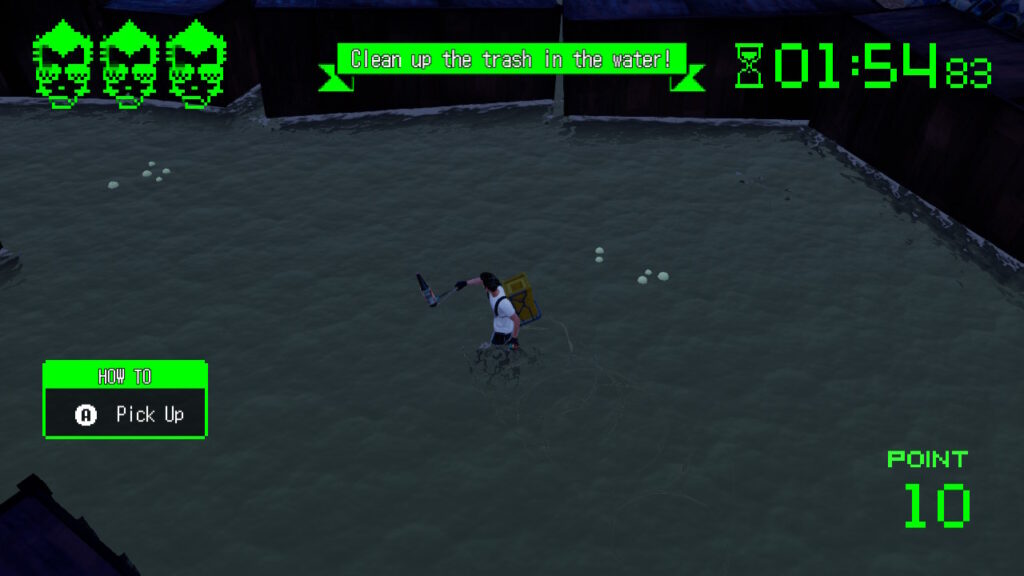
No More Heroes III‘s music is a huge part of its appeal. The main leitmotif is constantly rearranged to fit different emotional beats. Bosses get their own distinct track that vary in styles, and reflects their individuality and personality.
There are fusions of hip-hop, metal, traditional Japanese folk, and lots of chiptune. The mixture beautifully binds the various tones of Travis’ journey, and flawlessly puts the player in his mindset. Impressively, there is even a piece that features Travis’ voice actor Robin Atkin Downes performing a free-style rap, and he is extremely natural and hilarious.
The voice cast is as always perfectly directed. No More Heroes III and its predecessors have a very unusual narrative with strange characters that say bizarre dialogue. The series has always managed to keep performances extremely convincing in spite of the outlandish material. No More Heroes III is no exception, and from beginning to end the illusion never breaks.
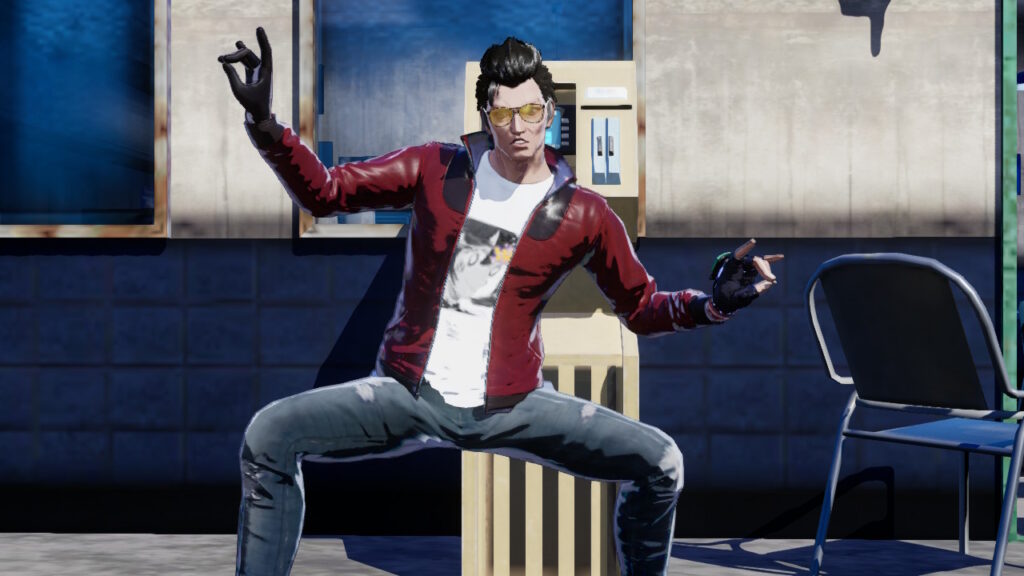
No More Heroes III mostly delivers on what fans of the prior entries were promised for an insane and climactic second sequel. It’s highly recommended that interested gamers play Travis Strikes Again, since many of the key players are introduced and set up in that title.
Anyone new to No More Heroes won’t find this new entry to be a place to start. The call-backs to prior games are many, along with some references to other Grasshopper Manufacturer titles in the “Kill the past” universe. The events that unfold are surreal, and make sense with meta logic rather than a traditional narrative structure.
The gameplay is a mixed bag thanks to the hardware limitations, and the developers worked with what they had to deliver the most fluid experience possible. It’s a hit that may have been necessary, and while it may not please everyone, No More Heroes III offers a completely new experience unlike any hack and slash before it.
No More Heroes III was reviewed on Nintendo Switch using a review code provided by Grasshopper Manufacturer. You can find additional information about Niche Gamer’s review/ethics policy here.